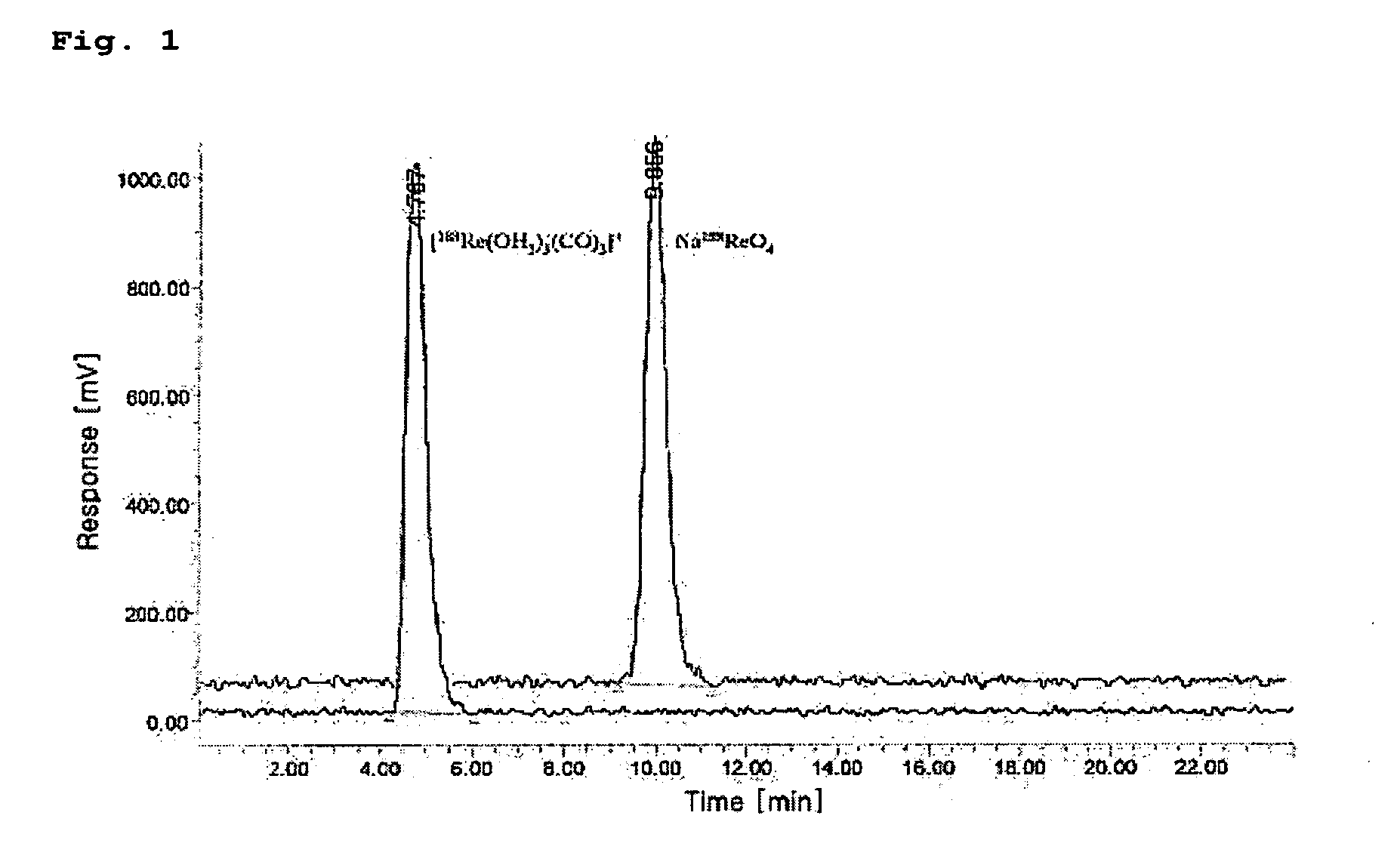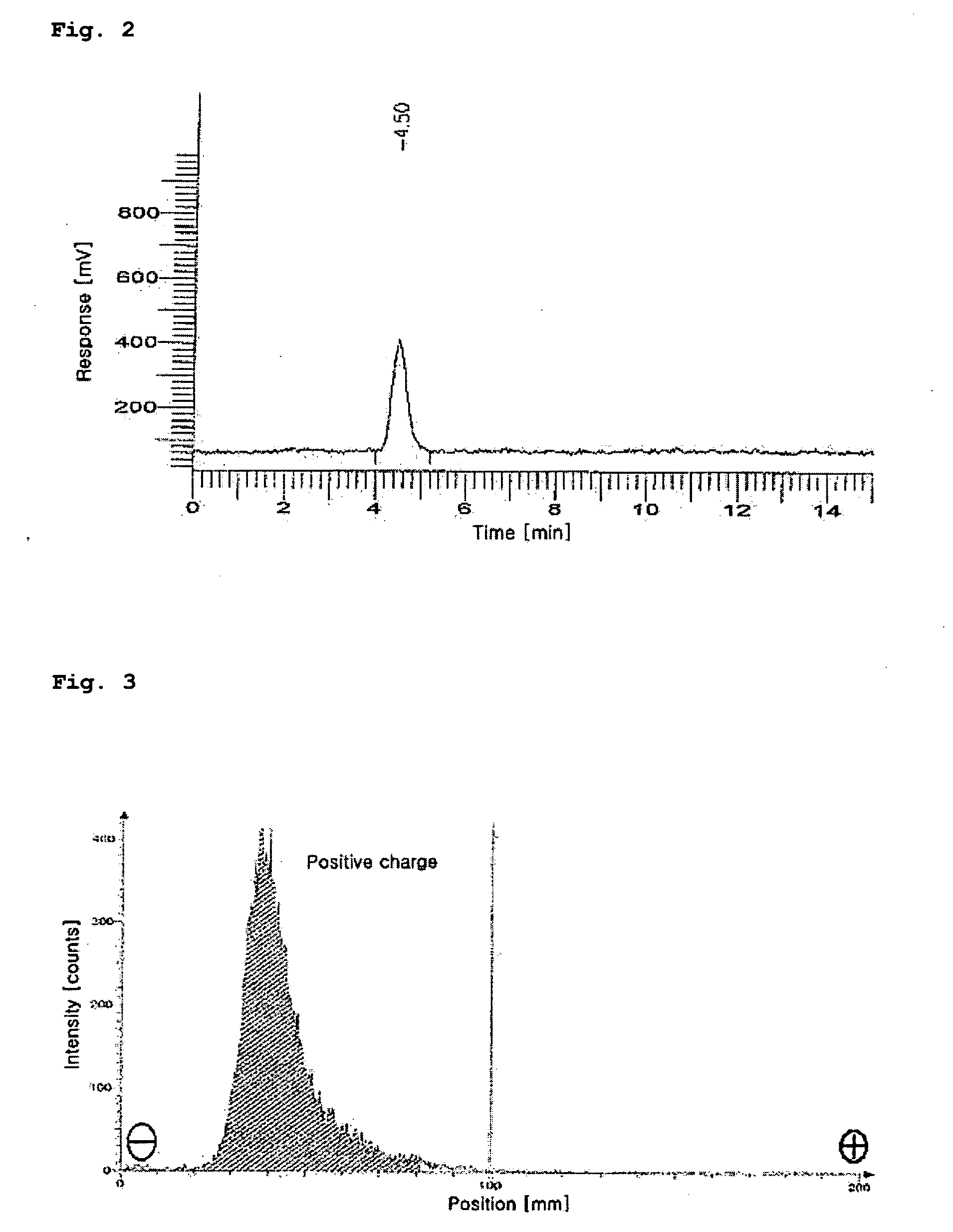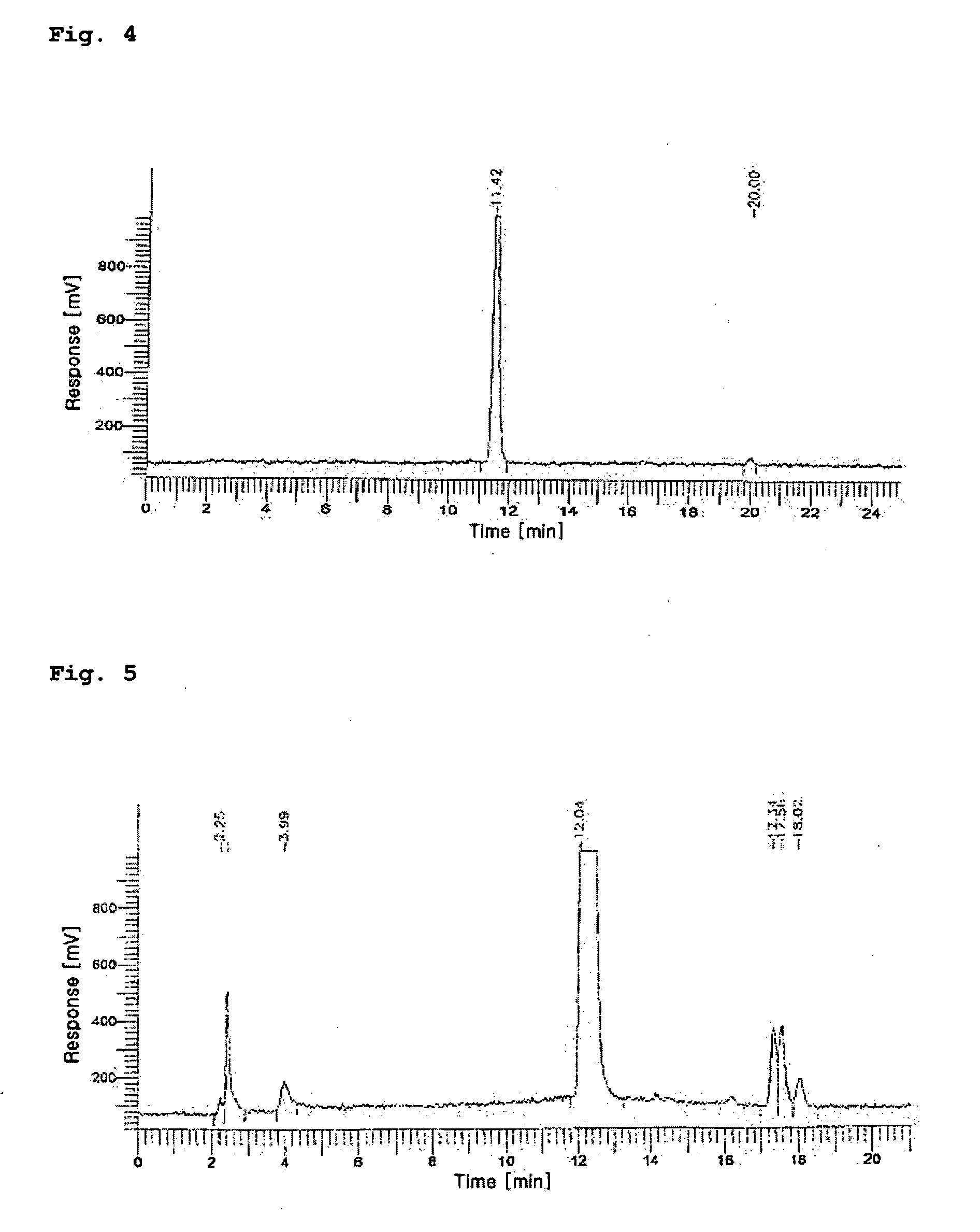Method of preparing rhenium-tricarbonyl complex and its precursor
a tricarbonyl complex and complex technology, applied in the field of preparing a 188retricarbonyl complex, can solve the problems of difficult to label radionuclides emitting -rays to materials other than diagnostic radionuclides, difficult to use reducing agents in excess of predetermined amounts, and high toxicity of radionuclides, etc., to achieve high yield
- Summary
- Abstract
- Description
- Claims
- Application Information
AI Technical Summary
Benefits of technology
Problems solved by technology
Method used
Image
Examples
embodiment 1
Synthesis of Rhenium-Tricarbonyl Precursor
[0051]
[0052]3 mg of borane-ammonia, 3 mg of potassium boranocarbonate, and 3 mg of borohydride exchange resin were placed in a 10 ml vial, which was then sealed with a rubber plug. 1 ml of about 50 MBq sodium perrhenate solution and 7 μl of conc. phosphoric acid (85%) were injected into the vial using a syringe. Subsequently, the resulting mixture was subjected to react at 60° C. for 15 minutes using a boiling water bath, and the resulting reactant was cooled to room temperature, thus obtaining a neutral 188Re-tricarbonyl precursor (1) in a yield of 97% or more.
embodiment 2
Synthesis of 188Re (I)-Tricarbonyl Histidine Complex
[0053]
[0054]500 μl of histidine was placed in a 10 ml vial, which was then sealed with a rubber plug. Into the vial, 800 μl of the 50 MPq 188Re (I)-tricarbonyl precursor solution synthesized in Embodiment 1 was injected using a syringe. Subsequently, the vial was heated to 75° C. for 30 minutes and then cooled to room temperature, thus obtaining a 188Re (I)-tricarbonyl histidine complex (3) in a yield of 97% or more.
experimental example 1
HPLC Measurement of 188Re (I)-Tricarbonyl Precursor
[0055]The HPLC measurement was conducted in order to separate the 188Re (I)-tricarbonyl precursor synthesized in Embodiment 1.
[0056]The HPLC measurement was carried out with a WATERS system provided with a radiometric detector using methanol (hereinafter, referred to as ‘solvent A’) and 0.05 M triethylammoniumphosphate buffer (TEAP, pH 2.25, hereinafter referred to as ‘solvent B’) using two pumps each equipped with a reverse phase Xterra™ RP18 5 μm column (4.6×250 mm, Waters, Ireland).
[0057]The solvent conditions for HPLC were as follows: in the range of 0 to 5 minutes, 100% solvent A began to flow and was then converted into 100% solvent B; in the range of 5 to 8 minutes, 100% solvent B began to flow and was then converted into 25% solvent A and 75% solvent B; in the range of 8 to 11 minutes, 25% solvent A and 75% solvent B were converted into 34% solvent A and 66% solvent B; in the range of 11 to 22 minutes, 34% solvent A and 66% ...
PUM
 Login to View More
Login to View More Abstract
Description
Claims
Application Information
 Login to View More
Login to View More - R&D
- Intellectual Property
- Life Sciences
- Materials
- Tech Scout
- Unparalleled Data Quality
- Higher Quality Content
- 60% Fewer Hallucinations
Browse by: Latest US Patents, China's latest patents, Technical Efficacy Thesaurus, Application Domain, Technology Topic, Popular Technical Reports.
© 2025 PatSnap. All rights reserved.Legal|Privacy policy|Modern Slavery Act Transparency Statement|Sitemap|About US| Contact US: help@patsnap.com



